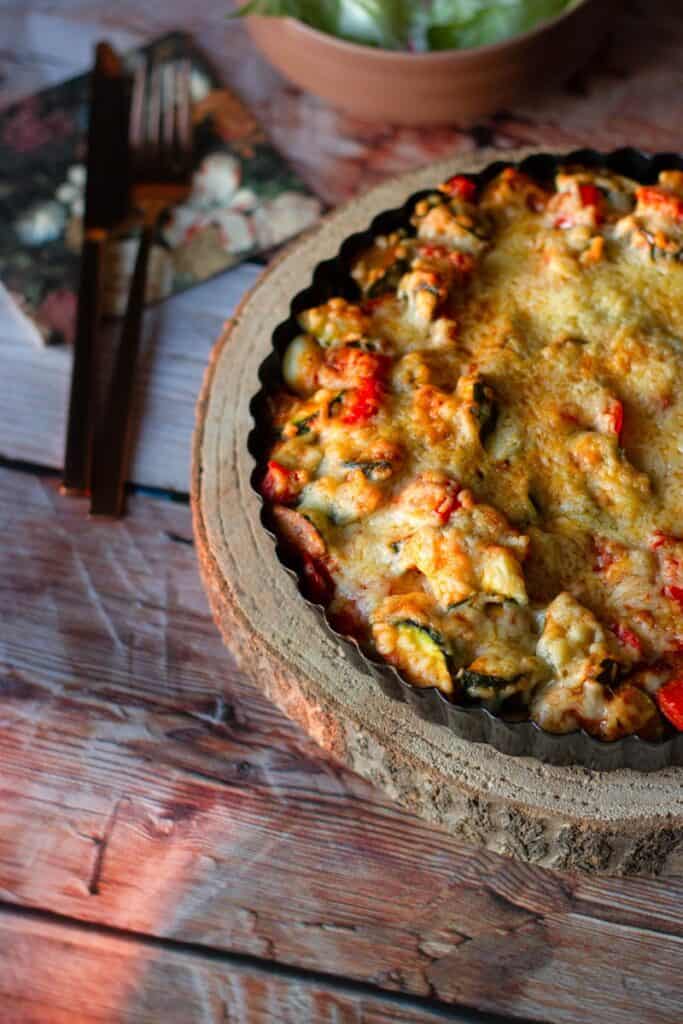What to eat during fasting is one of the most common questions people ask when starting a low-carb lifestyle.
You want to feel full, stay in fat-burning mode, and avoid that mid-day energy crash but picking the wrong foods can leave you feeling sluggish, hungry, or even knock you out of ketosis.
If you’ve ever struggled to keep your fast going or felt confused about how certain foods affect your progress, you’re not alone.
That’s where this guide steps in.
You’ll learn exactly what to eat before and after your fast, how to stay energized, and which snacks and drinks support your goals without breaking your fast.
No fluff… Just simple, effective tips you can use right away.
So, if you’re ready to make fasting feel easier and more effective, you’re in the right place.
Let’s walk through what really works when it comes to fasting on a low-carb diet.
What to Eat Before Fasting: Best Low-Carb Meals

Starting your fast with the right meal makes all the difference.
A balanced plate filled with healthy fats, quality protein, and fiber helps you feel full longer and keeps energy steady.
Think of eggs scrambled in olive oil, paired with a few slices of avocado and a handful of leafy greens.
This kind of meal fuels your body without spiking blood sugar, which means fewer cravings as you fast.
If you prefer something lighter, chia pudding with unsweetened almond milk and a sprinkle of nuts is another smart option.
The key is to avoid refined carbs and stick to whole foods that digest slowly.
Hydrating before your fast is just as important, drink water with a pinch of sea salt or sip on herbal tea to stay ahead of dehydration.
What to Eat After Fasting to Stay in Ketosis
When you end a fast, how you reintroduce food matters. Your digestive system needs something gentle, especially after a longer fasting window.
Bone broth is often the best first step—it’s warm, soothing, and rich in electrolytes. After that, soft-cooked vegetables like zucchini or spinach pair well with scrambled or boiled eggs.
These foods give your body protein, fats, and nutrients without causing digestive upset or knocking you out of ketosis.
To help your body ease back into eating mode,
keep your first meal light and simple, then build up slowly.
Avoid heavy, high-carb dishes immediately after fasting, as they can cause energy crashes or bloating, undoing the progress you just made.
Low-Carb Snacks That Won’t Break Your Fast
Not all fasting windows are strict. On flexible days, a small snack can help keep energy up without spiking insulin or kicking you out of ketosis.
Fasting-friendly snacks include:
- Olives
- A handful of nuts (almonds, macadamia, or pecans)
- Pickles (check for no added sugar)
- Hard-boiled eggs
- Cheese slices
- Unsweetened Greek yogurt (in moderation)
Stick to small portions. These snacks offer fat and protein with minimal carbs, helping you stay focused and in control.
Top Drinks That Support Fasting Without Breaking It

Staying hydrated is key during fasting. Choose drinks that won’t affect blood sugar or insulin levels.
Here are your best options:
- Plain Water – Add a pinch of sea salt for extra minerals.
- Black Coffee – Supports focus and may curb hunger.
- Green or Herbal Tea – Chamomile, mint, or rooibos are good caffeine-free choices.
- Apple Cider Vinegar in Water – Some use this to aid digestion during fasting.
Skip drinks with sweeteners, dairy, or artificial flavors. Even “zero-calorie” options can interfere with fasting results.
Essential Electrolytes to Take During Fasting
While fasting, your body naturally sheds water and with it, essential electrolytes.
That’s why staying on top of your sodium, potassium, and magnesium levels is so important. Even a small loss can lead to headaches, fatigue, or muscle cramps.
A pinch of sea salt in your water can make a noticeable difference, significantly during longer fasts.
Avocados and leafy greens supply potassium, while magnesium-rich foods like pumpkin seeds or a quality supplement help your muscles stay relaxed and reduce that wired-but-tired feeling.
If you’re asking, “Do electrolytes break a fast?”
The answer is no, as long as you’re using products without added sugars or calories.
How to Reduce Hunger While Fasting
Fasting doesn’t always feel easy. But a few small changes can make a big difference.
Here’s what helps:
- Eat enough protein and fats before fasting – These nutrients keep you satisfied.
- Drink more water – Dehydration can mimic hunger.
- Stay active or focused – Distraction helps manage cravings.
- Sip tea or black coffee – Both help control appetite.
Listening to your body is key. Hunger signals can come from habit, not always from true need.
Common Fasting Mistakes to Avoid
Even a solid plan can get derailed by small mistakes. Here’s what to watch out for:
- Skipping electrolytes
- Eating too many carbs before starting your fast
- Breaking your fast with junk food
- Not drinking enough water
- Overeating low-carb snacks during fasting windows
Being mindful of these points helps you stay on track and avoid frustration.
When to Avoid Fasting on a Low-Carb Diet
Fasting isn’t right for everyone. If you’re in any of the following situations, fasting may not be the safest choice:
- Pregnant or breastfeeding
- Taking medications that require food
- Managing diabetes or blood sugar disorders
- Recovering from an eating disorder
Speak with a healthcare provider if you have concerns. It’s important that your fasting plan supports your health, not harms it.
How Meal Timing Affects Fasting Success on a Low-Carb Diet
The timing of your meals can make a big difference in how well your fast goes, particularly on a low-carb diet.
Eating your last meal too late at night can lead to poor sleep, blood sugar spikes, and a harder time entering fat-burning mode.
Instead, aim to finish eating a few hours before bedtime to give your body time to wind down and start the fasting process naturally.
During your eating window, space out your meals to avoid constant snacking. This gives your body time to rest, digest, and stay in ketosis longer.
Some people find that eating two well-balanced meals, one earlier in the day and one in the late afternoon, keeps hunger under control and energy levels stable.
Try tracking how you feel with different meal times.
You might be surprised how much your timing affects cravings, focus, and even fat loss. Small shifts can lead to big results.
How Exercise Impacts What You Should Eat During Fasting
Exercise adds another layer to your fasting routine, specially on a low-carb diet.
When you work out while fasting, your body taps into fat stores for energy, which can help speed up fat loss.
But the kind of exercise you do matters. Light workouts like walking or stretching usually don’t require any food beforehand.
However, if you’re lifting weights or doing high-intensity training, it helps to eat a small low-carb, protein-rich meal after your session to support muscle recovery.
Eggs, a protein shake, or some grilled chicken with veggies are all great options.
Before a workout, if you’re eating within your window, go for something simple like boiled eggs or a spoonful of nut butter.
The goal here is to fuel your body without kicking it out of ketosis.
Listen to your energy levels and adjust your meals based on how your body responds to both fasting and exercise.
Signs You’re Eating the Wrong Foods During a Fast
If fasting feels harder than it should, your food choices might be the reason. One clear sign is feeling hungry too soon after eating.
This often happens when meals are low in fat or protein and high in carbs, even if they’re labeled “low-carb.”
Another red flag is constant cravings especially for sugar or snacks.
This can mean your blood sugar isn’t stable, often due to hidden carbs or processed ingredients sneaking into your meals.
Feeling tired, foggy, or irritable during your fast is another warning sign. It might mean you’re not getting enough electrolytes or that your last meal didn’t give your body the fuel it needed.
Pay attention to how you feel after eating. The right foods should help you stay full, focused, and steady.
If they don’t, it’s time to take a closer look at what’s really on your plate. Simple changes can make fasting much easier.
Frequently Asked Questions About What to Eat During Fasting
What are the best foods to eat before a fast?
Focus on eggs, avocado, fatty fish, and leafy greens. These provide lasting energy without raising blood sugar.
Can I eat low-carb snacks during intermittent fasting?
Some fasting styles allow it. Stick with small portions of nuts, cheese, olives, or boiled eggs.
Does drinking coffee break a fast?
Black coffee does not break a fast. Just skip the cream and sweeteners.
What should I avoid eating after a fast?
Avoid processed foods, sugar, and large meals. Start light with broth, eggs, and soft veggies.
Is it okay to eat fruit during fasting on a low-carb diet?
Most fruits contain too much sugar. Berries in small amounts are the better choice.
Do electrolytes break a fast?
No, unsweetened electrolytes usually don’t affect your fast. Just check the label for hidden sugars or calories.
Final Thoughts on What to Eat During Fasting
Knowing what to eat during fasting helps you get better results with less stress. Start strong with meals rich in fat, protein, and fiber.
Break your fast gently, hydrate often, and don’t skip your electrolytes.
Smart planning supports energy, reduces cravings, and keeps your low-carb fasting routine effective.
Small choices add up, so pay attention to how your body responds and keep things simple.